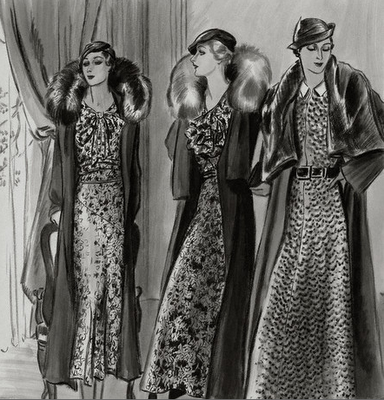- ” Put fashion second and your health first, because your legs have got to last you all your life, whereas a fashion will disappear in five minutes.” This was said by an orthopaedic specialist, after a British headmaster banned his pupils from wearing platform trainers. He was worried that they would break their ankles.
- The problem is that in many cases, the more fashionable something is, the more uncomfortable or even dangerous it is to wear. Perhaps the earliest fashions ‘ to die for’ (literally) were conceived in post- revolutionary France. Women then wore thin linen dresses which they had to wet to make them take on the shape of their bodies. They then went out in all kinds of weather with the wet clothes on. The result of this fashion was a new illness, linen flu, which led to many premature deaths. In Victorian times women’s clothes could also prove fatal. Their corsets were so tight that most women had severe digestive problems, while the incredibly wide dresses regularly caused the death of fashionable young women. As they walked past open fireplaces, their dresses frequently caught fire, and nobody could get close enough to them to put the fire out.
- It is not just women who have suffered for fashion. Men have had to put up with their share of discomfort too. Think of the 17th century men in Europe with their heavy wigs (still worn by lawyers today), tight corsets (yes, men too) and high-heeled shoes walking, or trying to walk, around St James and Versailles. But little can compare with the heavy ruffs worn at the time; moving the neck needed serious planning if you didn’t want it to be cut to pieces.

- In the 18th century the zinc-based make-up used to whiten the faces of both men and women left their skin destroyed by the time they were 30. And at this time women wore their hair so dangerously high that they had to kneel down to get into a coach or carriage.
- In the 1920s men’s trousers , called ‘Oxford bags’, were so wide that men frequently tripped over in them, just like hippies in their flares 50 years later. To try to cycle in them was to risk serious injury. But cyclists didn’t usually suffer as much as the dancer, Isadora Duncan, whose beautiful long scarf, high fashion at the time, caught in the wheel of her sports car and strangled her.


- Probably the part of the body that has suffered most through history are the feet. For centuries nobody knew how to shape shoes to the foot. Shoes were straight, and to be worn on either foot. They were agony. It was not until 1865 that shoes were designed for right and left feet !
- So the discomforts and dangers we put up with today are nothing compared to some of the killers from the past. And anyway, as a famous French designer once said: ‘ Real fashion- it’s agony, ma cherie, but it’s always worth it.’
Adapted from the Sunday Times
Great post!From our days, great pictures.you are BRAVAAAAAA!!!
thanks … I’m glad you like it)))
Great post, I personally don’t agree with the conclusion, I don’t think it’s worth it. I’ll always go for substance over style – but unlike the rigidity of much of the fashion world throughout the ages I think people can be stylish without harming themselves.
Thank you. And yes you’re right , people can be stylish without harming themselves , but no matter how it is, that French designer had his opinion and I think that’s for a reason.